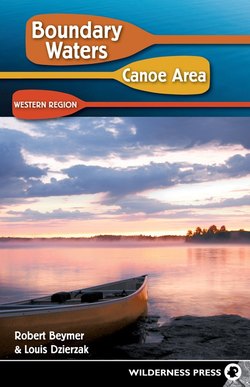Читать книгу Boundary Waters Canoe Area: Western Region - Robert Beymer - Страница 8
На сайте Литреса книга снята с продажи.
Preface to the 6th Edition
ОглавлениеThis book was written for the peripatetic paddler—the canoeist who wants to explore the BWCA Wilderness. Base-campers and easy-going anglers, however, should also find a good deal of useful information herein to help them plan their trips.
My introduction to canoeing in the Boundary Waters occurred in 1967, along with 14 other members of my Explorer Post from Indianola, Iowa, and I’ve dipped my paddle in the cool, clear waters of “canoe country” every summer since then. While guiding BWCA canoe trips for Camp Northland from 1969 through 1977, I saw the need for a published trail guide. None existed at that time. My trail notes at Camp Northland became the foundation for this book.
The BWCAW, with over 200,000 visitors each year, is the most heavily used wilderness in the nation. With over a million pristine acres of lakes, rivers, and forests within its borders, however, the Boundary Waters should be large enough to accommodate its visitors. In 1976, less than one-third of the available quotas were actually used. Unfortunately, however, over two-thirds of the visitors to the Wilderness used less than 14 percent of the designated entry points. The result was (and still is) congestion at some of the most popular entry points. My book was written to help you discover the entry points and routes that may suit your desires and will result in the highest quality wilderness experience possible.
Since publication of my first book in 1978, over 100,000 copies of both volumes have been sold to inquisitive paddlers. Over the years, I received feedback from friends and strangers alike. At my work with camping stores in the Twin Cities and in Ely, as well as at speaking engagements throughout the upper Midwest, I had opportunities to personally meet many of my readers—a valuable experience that presents itself to few writers. Because of the feedback received, and because of continuing research conducted from my current home near the Wilderness, there have been many changes made to these guidebooks in successive editions and printings.
It may seem odd to the casual wilderness observer that frequent changes are necessary to update a guidebook like this one. “How can a wilderness change?” you might ask. Natural changes do occur, however, and readers need to know about them. Forest fires and windstorms occasionally alter the landscape. Beaver dams deteriorate and small lakes upstream literally dry up. Or new beaver dams are constructed, flooding portage trails.
More often, the changes that may significantly affect your visit are caused by decisions of Forest Service officials. I have witnessed many changes in the administration of the Boundary Waters. The ban against non-reusable food and beverage containers (cans and bottles) took effect in 1971. The visitor distribution (quota) system was started in 1976. Implementation of the BWCA Wilderness Act of 1978, which eliminated motorboats from most of the interior lakes, took effect on January 1, 1979. Since then, entry points have been eliminated, renamed, grouped together, or separated for the purposes of quota restrictions. In 1995, a decision was made to restrict the number of people in a group to nine and the number of watercraft to four. Canoe rests on portage trails were also eliminated that year. These and many other changes did occur in the BWCAW.
Both my publisher and I want this guidebook to serve you, the paddler. We will continue to make changes in the future, reflecting new regulations, alterations to existing routes, and the wishes of our readers. I’ve tried to make this book interesting and useful. Above all, my goal has always been to impart accurate information. I believe that this attention to accuracy and to the concerns of our readers is why this book continues to be as popular today as it was when first published.
This book was written for the canoe camper who is capable of taking care of himself or herself in a wilderness environment. It does not take you by the hand and lead you through the often-complicated mazes of lakes, streams, and portages that characterize the BWCAW. It does not tell you when to turn right, when to veer left, or when and where to stop for lunch. You should already possess the understanding and the basic skills that are essential for a canoe trip into a wilderness, particularly the ability to guide yourself along the suggested routes without detailed directions. This book also does not include such topics as how to paddle a canoe, how to carry your gear across portages, how to shoot rapids, or how to pack your gear. Many good “how to” books have been written about canoeing and camping in the Boundary Waters. This guide is a “where to” book.
—Robert Beymer
June 2000
